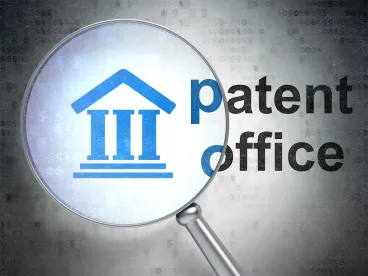This article is second in a two-part series focusing on various issues related to priority claims in U.S. patent applications. While Part 1 is a general overview of how to make a proper priority claim, this article addresses how to make a timely post-filing priority claim in an application and how to correct an improper priority claim. Timeliness is crucial to avoid high fees and ensure that an earlier priority date is not lost. The procedures discussed below are post-America Invents Act (AIA) procedures applicable to applications and issued patents filed on or after March 16, 2013.
Making A Timely Post-Filing Priority Claim
A priority claim must be made within 4 months of the filing of the application or 16 months from the filing date of the prior application, whichever is later. 37 C.F.R. § 1.78 (domestic priority claim); 37 C.F.R. § 1.55 (foreign priority claim). For foreign priority claims, it is good practice for the applicant to confirm that a certified copy of the foreign application has in fact been retrieved or received by the U.S. Patent and Trademark Office (USPTO).
As noted in Part 1, it is good U.S. patent practice for an applicant to include a “Cross-Reference To Related Application(s)” section. As such, it is good practice for this section be added to the specification (e.g., via preliminary amendment) when a priority claim is being added. Further, if the filed application previously included a “Cross-Reference To Related Application(s)” section, this section should be amended to reflect the proper priority claim.
Correcting an Untimely Priority Claim
Should a priority claim for a pending U.S. application need to be corrected outside the time period noted above, the USPTO requires a petition to accept an unintentionally delayed benefit claim for corrections to domestic and foreign priority claims in accordance with 37 C.F.R. § 1.78(e) and § 1.55(e), respectively. As explained below, the petition must be accompanied with additional material.
A priority claim for an issued U.S. patent can be corrected by filing a reissue application or by using the procedures discussed below when filed with a certificate for correction. However, the petition will be denied if further examination would be required, such as if the priority date would change the application’s AIA status.
Domestic
As set forth in 37 C.F.R. § 1.78(e), the petition must be accompanied by:
(1) Reference to the domestic application is required by the statute and by 35 U.S.C. § 120, unless previously submitted;
(2) The petition fee as set forth in § 1.17(m), which is currently $1,700 (undiscounted); and
(3) A statement that the entire delay between the date benefit claim was due under paragraph (d)(3) of this section and the date the benefit claim was filed was unintentional.
Further, 37 C.F.R. § 1.78(e) notes that “[t]he Director may require additional information where there is a question whether the delay was unintentional.”
Foreign
In general, should a foreign priority claim need to be corrected outside the time period noted above, under 37 C.F.R. § 1.55(e), the petition must be accompanied by:
(1) An application data sheet identifying the foreign application, unless previously submitted;
(2) A certified copy of the foreign application, unless previously submitted or certain exceptions listed in the statute apply;
(3) The petition fee as set forth in § 1.17(m); and
(4) A statement that the entire delay between the date the priority claim was due under this section and the date the priority claim was filed was unintentional.
Further, 37 C.F.R. § 1.55(e) notes that “[t]he Director may require additional information where there is a question whether the delay was unintentional.”
Conclusion
While the above discussion provides a general overview of how to make a timely post-filing priority claim and how to correct an improper priority claim, applicants are encouraged to consider when and whether to file various papers under every application’s particular circumstances and to verify requirements according to the current rules and regulations of the USPTO.





 />i
/>i

